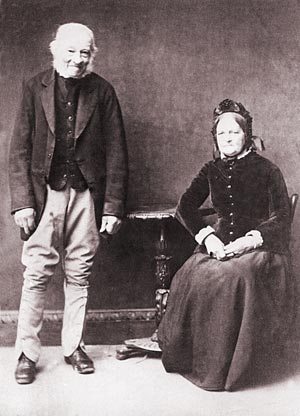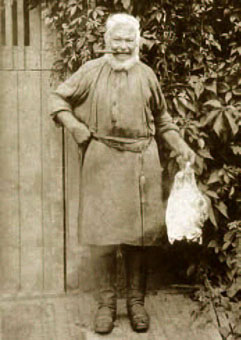|
|
What exactly is a cordwainer?
John Nichols Bailey, or Bayley, as he was baptised, was christened on 20 May 1810 at St John the Baptist, Bodicote (then Boddicott), near Banbury, Oxfordshire, son of Sarah Bailey, who had two known children, but died a spinster. Sarah was the second of the four children of Thomas Bayley, a labourer, and Ann Grant, both of Boddicott, who had married at nearby Adderbury on 3 November 1778.
According to family lore, the father of John Bailey was a “lawyer” of Stratford-upon-Avon, who had employed Sarah Bailey as his housekeeper. Nothing has yet been uncovered to prove or disprove this story, or indeed, whether John Bailey took his middle name from his father’s surname, as was often the case.
What does however seem likely is that when, at the age of twelve, he was apprenticed for seven years to Banbury cordwainer Thomas Cave, the considerable sum of twenty pounds that his mother paid was not out of her own pocket, and leaves open the possibility of a hidden benefactor.
|
|
Four years after finishing his apprenticeship, John was, at least for legal purposes, a resident of Cherington in Warwickshire, this being his declared abode when on February 13 1833 he married Mary Colleycutt at the Parish Church of St Martin’s, Birmingham, the oldest and most central in the city. At the time of the census on June 6, 1841, he is to be found with his wife and one-year-old daughter Hannah (his first known child) in Heneage St., Birmingham, less than a mile from his in-laws and not much farther from the church. From about 1845, if not earlier, until his death, he lived adjacent to Cherington, in Stourton, where he worked not only as a shoemaker but also a butcher, suggesting that there were not enough feet in the two small villages to be very profitably shod.
John Nichols Bailey died in Stourton in 1890, at the age of eighty, and was buried at the Parish Church of St John the Baptist, Cherington, on November 8th.
John and Mary Bailey’s family
John and Mary had five sons and five daughters, which was rather against the odds, as the first four children were all girls. Eight of the children married, and their many descendants now live in all parts of Britain, as well as abroad.
Their eldest son, Edward (Ned), born in 1845, worked in his father’s shoemaker’s shop in his earlier life, as might have been expected. However, by the age of 25 he had preferred butchery, as did his brother David; they supplied the village with meat on into the twentieth century. None of John’s other sons followed him in his trade, though his wife Mary did help him; she was a shoebinder at the time of the 1851 census.
|




